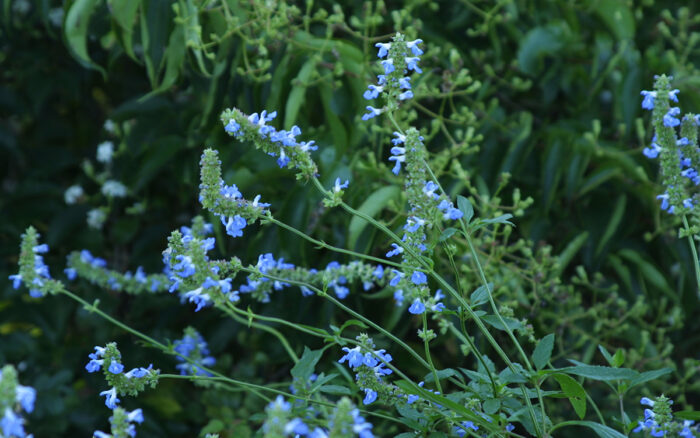
Gardening in a windy, exposed area can be a challenge. Luckily, some plants are not only impervious to the effects of gusts or breezes but will react in such a way that they’re transformed into living kinetic sculptures. Movement, elegance, and an extra layer of beauty transform the garden. Just picture how delightful it is to observe the movement of a quaking aspen (Populus tremuloides, Zones 1–7) or the swaying of a weeping willow (Salix babylonica, Zones 6–9) on a windy day. And it’s thrilling to watch a breeze rippling through a field of corn poppies (Papaver rhoeas, annual) or New Zealand wind grass (Stipa arundinacea, Zones 8–10). Just like those plants, every one of the selections below has managed to charm me in its own way on recent breezy days.
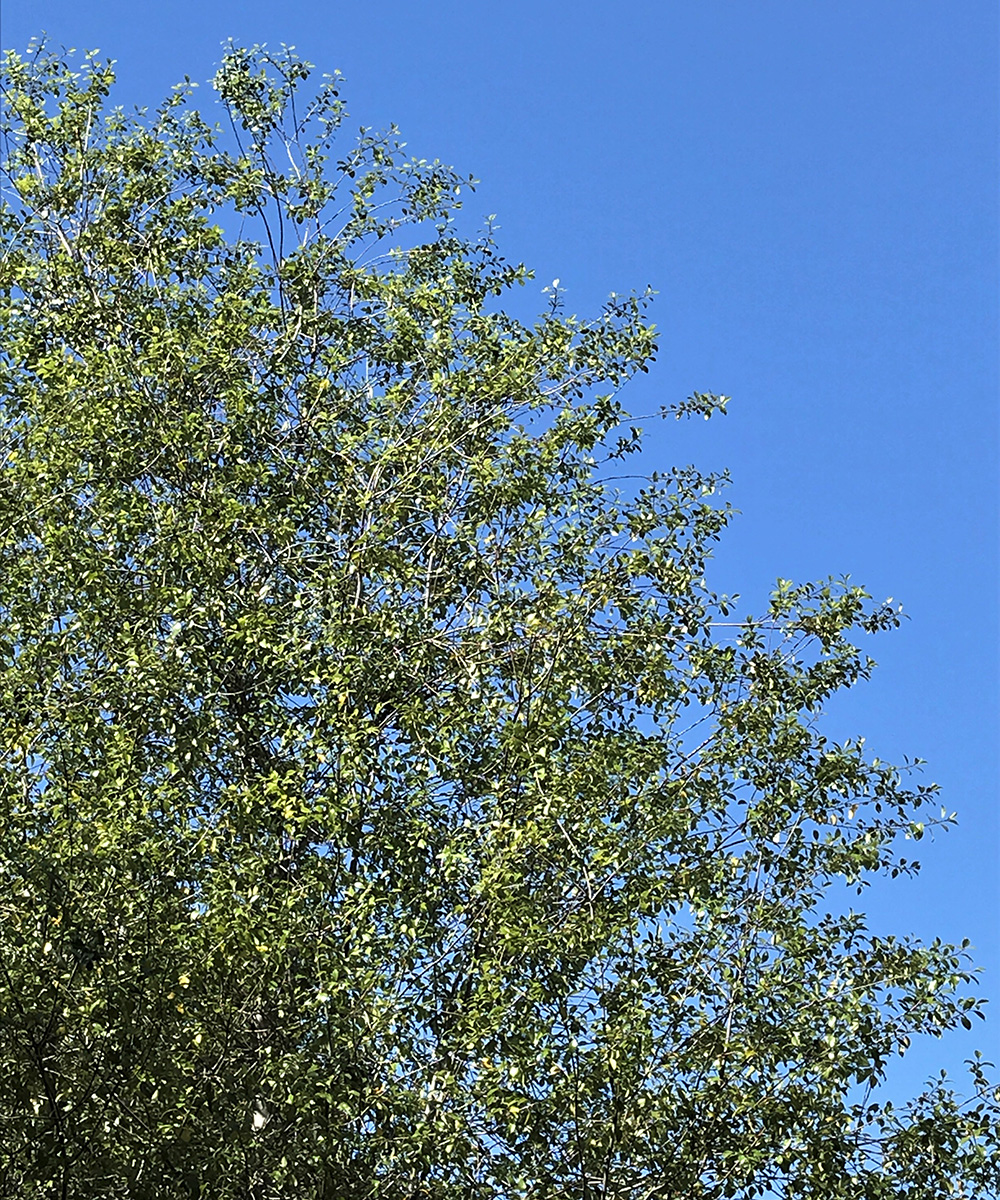
‘Silver Sheen’ kohuhu
Pittosporum tenuifolium ‘Silver Sheen’, Zones 8–11
‘Silver Sheen’ kohuhu is a quick-growing shrub that’s clay, wind, and salt-spray tolerant. It rapidly grows into a graceful, upright, and loose habit if left unsheared. On a gusty day, the slender branches and stems sway and move, and the silvery-green leaves positively shimmer for a visual bonus. Inconspicuous black blooms hide among the leaves in spring. If you do decide to shear or prune ‘Silver Sheen’ (it’s a great hedging choice), be sure to wait until you’ve enjoyed its delicious fragrance. Reaching 20 feet tall and 8 to 10 feet wide when unpruned, this New Zealand plant takes full to partial shade and regular irrigation until establishment.
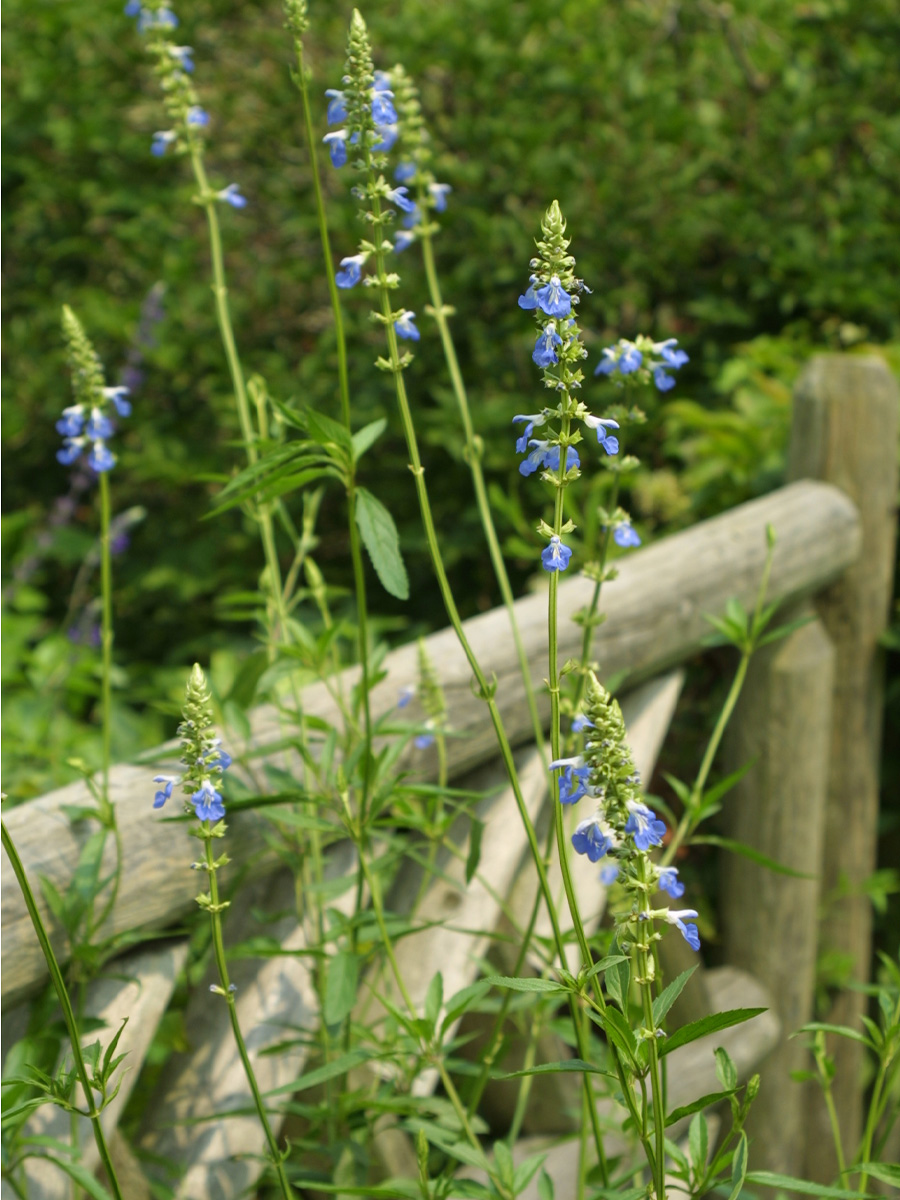
Bog sage
Salvia uliginosa, Zones 6–9
Bog sage is one tough, fast-growing, long-blooming sage that is tolerant of a wide range of growing conditions—including wind! This tall, clump-forming perennial is a magnet for pollinators and hummingbirds from late spring through summer, when the tall, slender stems bloom with spikes of nectar-filled sky-blue blooms. With its wind resistance and flexibility regarding different conditions, 4-foot tall and 2- to 3-foot-wide bog sage is an elegant choice for the back of a wind-prone border. It’s easy to grow in full sun or partial shade and in damp or dry (irrigate if this is the case) soil. Cut it back by half in winter.
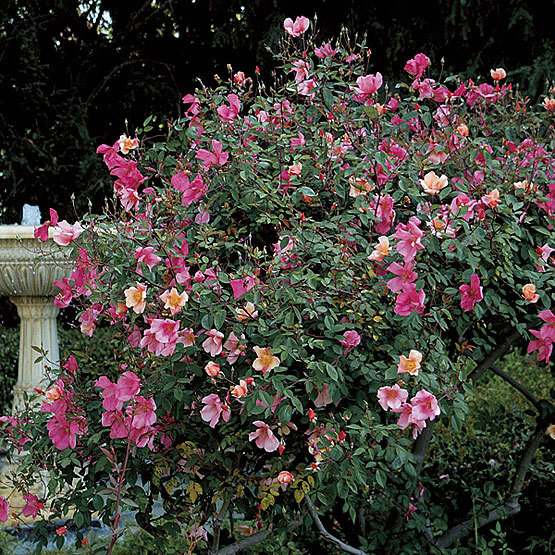
China rose
Rosa chinensis ‘Mutabilis’, Zones 6–9
In full bloom, with its abundance of showy flowers that resemble a host of fluttering butterflies, this lovely shrub rose turns a breezy day into a cause for celebration! It has slender stems and a loose, airy, open growth habit. Its pointed buds open into single, lightly fragrant, 3-inch blooms that go through a range of color changes, from gold, to copper, to yellow, to orange, to pink—with all of the colors appearing on the bush at the same time. An outstanding, easy-to-grow shrub, China rose blooms almost continuously from spring through fall and grows 6 feet tall and wide in Northern California. It performs best in full sun and in rich, well-amended soil with regular irrigation until establishment.
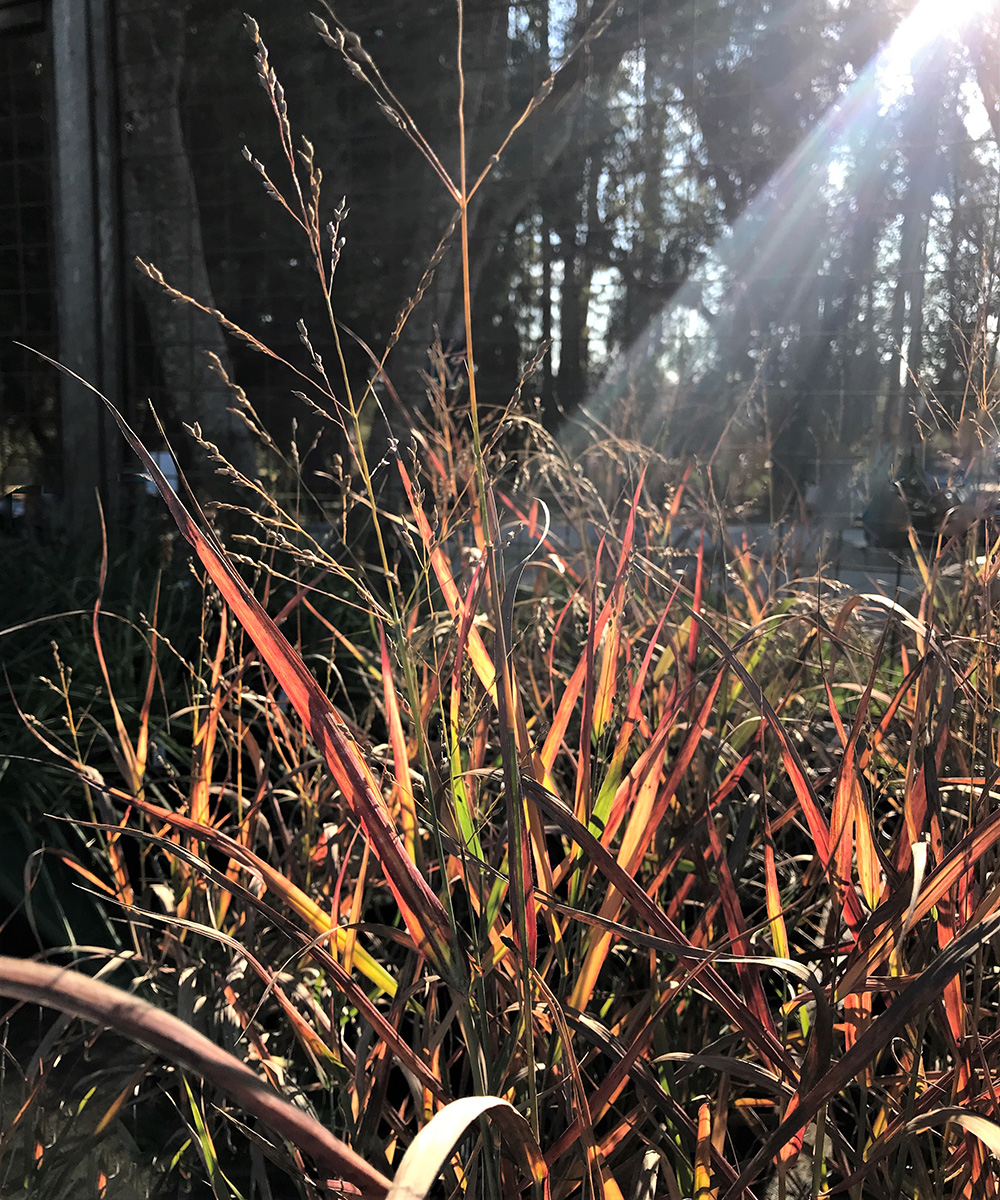
‘Hot Rod’ switch grass
Panicum virgatum ‘Hot Rod’, Zones 4–9
Add a colorful, graceful, vertical boost to your beds with this sturdy ornamental grass. The blades of this herbaceous perennial emerge blue-green in spring, quickly transitioning to a vivid dark red. Airy purple flower panicles top the long slender stems in summer and are followed by a fall show of deep purple foliage topped by reddish purple seed heads. It’s a stunner anywhere in the garden but is particularly lovely planted en masse in a wind-prone meadow. Grow in full sun, in rich, amended soil, and water regularly for best results. ‘Hot Rod’ switch grass reaches 3 to 4 feet tall and 2 to 3 feet wide.
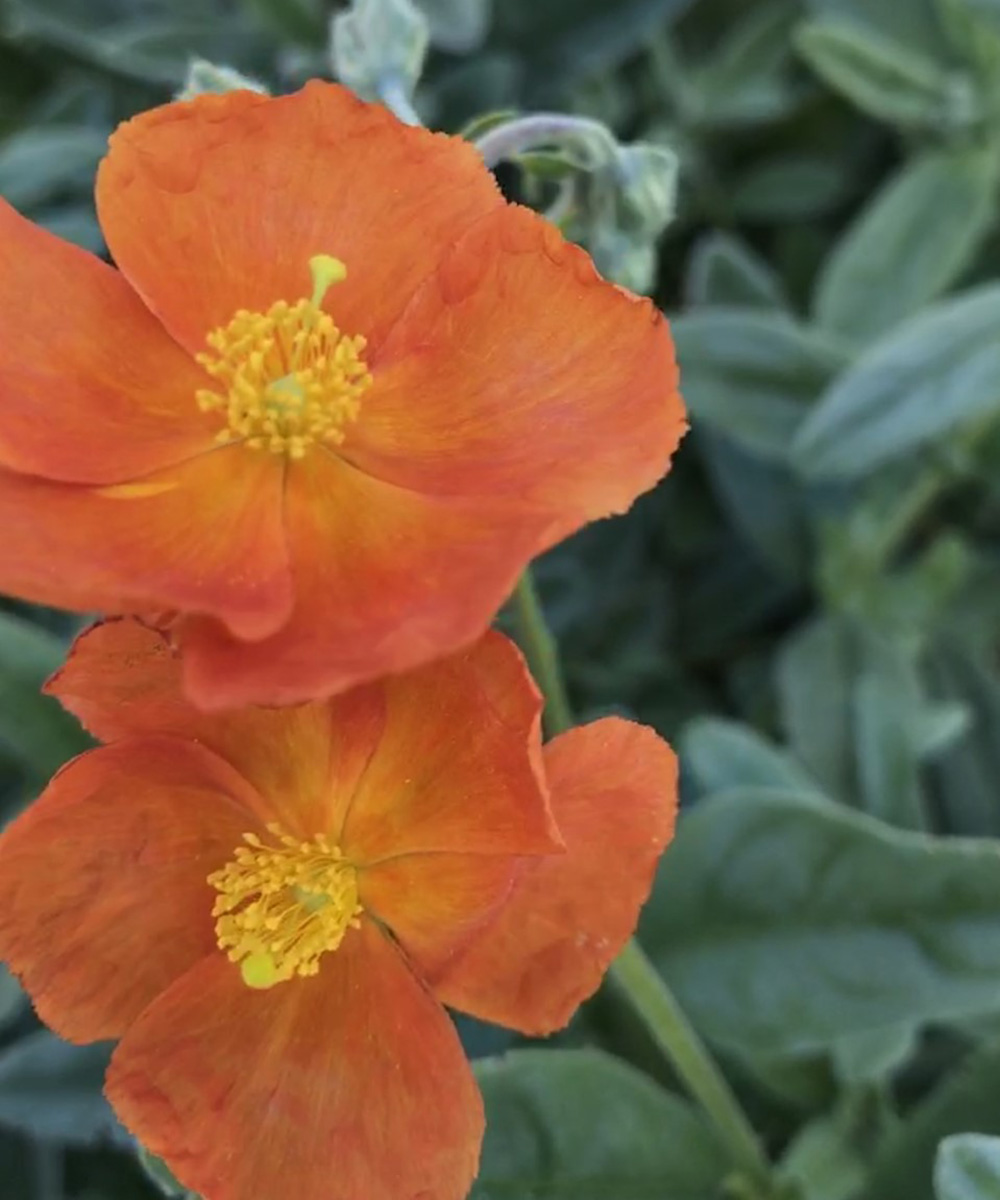
‘Henfield Brilliant’ rock rose
Helianthemum nummularium ‘Henfield Brilliant’, Zones 4–9
From late spring through summer, this plant delivers a nonstop display of single, papery burnt orange flowers that dance above a ground-hugging mat of dense, silver-green foliage. Sun loving, easy to grow, and tolerant of drought, deer, and wind (it looks particularly appealing on a breezy day), this showy, tough subshrub reaches only 8 inches tall when in bloom, spreading 18 to 20 inches wide. Good drainage is vital, as well as light but regular water during hotter summer months until establishment. After flowering, deadhead spent flowers and stems to encourage new growth and a repeat flush of blooms.
—Fionuala Campion is the owner and manager of Cottage Gardens of Petaluma in Petaluma, California.
Fine Gardening Recommended Products

Black and Decker 22-inch Cordless Hedge Trimmer
Fine Gardening receives a commission for items purchased through links on this site, including Amazon Associates and other affiliate advertising programs.
- 38 x 7 x 7 inches
- 6.9 pounds
- 1 Lithium Ion battery required (included)

ARS Telescoping Long Reach Pruner
Fine Gardening receives a commission for items purchased through links on this site, including Amazon Associates and other affiliate advertising programs.

Pruning Simplified: A Step-by-Step Guide to 50 Popular Trees and Shrubs
Fine Gardening receives a commission for items purchased through links on this site, including Amazon Associates and other affiliate advertising programs.



















Comments
Log in or create an account to post a comment.
Sign up Log in